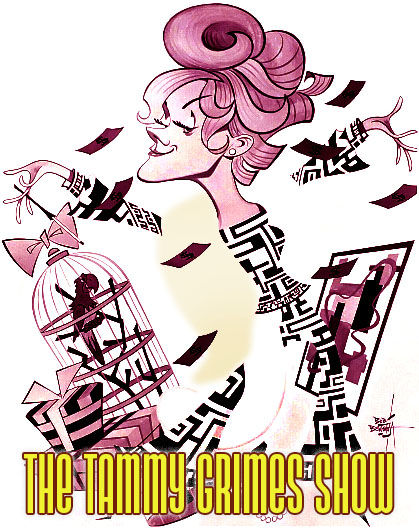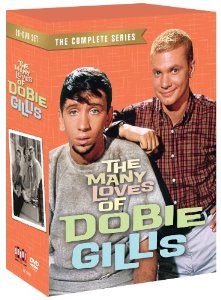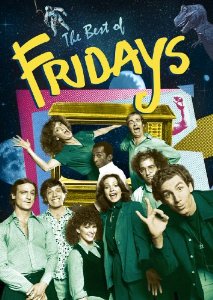




 |
 |
 |
 |
 |
|
|
TV
on DVD/ / / / / / / / /
/ / / / / Punk Book/ / / / / Holiday
Specials on DVD / /
/ / / Commercials / / / / / / Classic
TV Blog |
||||||
Though there were, of course, a few notable exceptions (Jackie Gleason’s notorious game show “You’re In the Picture” (1961) and of course “Turn-On” (1969) a show that was cancelled while its debut episode was running!), back in the ‘50’s through the ‘70s, ABC, CBS and NBC had a little more patience with their shows. A case in point: “The Girl from UNCLE.” That 1966 NBC series of camp and action, starring Stefanie Powers, was, from its premiere episode, always near the very bottom of the ratings, but it still aired a full season’s worth of 29 hour-long episodes. But, that very same year, not nearly as lucky was ABC’s half-hour comedy series “The Tammy Grimes Show.” One of the most notorious flops of 1960s TV, it got yanked—never to be seen again—after just three airings.
Grimes would win her first Tony Award for that performance and then reigned during its run as the Queen of the New York stage. Back then, most of the TV industry was headquartered in New York, just down the street from Broadway. Hence, when a new sensation exploded on the boards, and all of the Big Apple seemed to become enraptured, it was easy for NY-based TV execs to believe that those same stars were going to be the next big thing all across America as well. Unfortunately, that wasn’t usually the case.
Nevertheless, in the early and mid-1960’s, Grimes was a hot property and was pursued by several producers to bring her talents to TV. First, via Columbia studios, she was offered the lead in the program that would become the long-running sitcom “Bewitched.” Almost simultaneously, she was approached by producer Bill Dozier (who was then riding a wave of success thanks to his “Batman” series which had launched in January 1966). Dozier was smitten with Grimes and approached accomplished playwright George Axelrod to create a series for her. Presented with the two above offers, Grimes took the latter, bypassing the “gimmick” of “Bewitched” in favor of the theatrical underpinnings of Axelrod. Grimes might have later regretted that decision. Axelrod’s idea for a series for Grimes seemed to harken back to the madcap days of 1930s cinema. In the show, Grimes played a rebellious heiress, Tamatha (“Tammy”) Ward. (Hmmm? “Bewitched” = Samanatha; “Grimes” = Tamatha”?) Ward lived in a glam New York City. She often palled around with her fraternal twin, Terrence, played by Dick Sargent. (Yes, Dick Sargent i.e. “Darren #2” of “Bewitched.” Anyone seeing a theme here?)
For some built-in conflict, Hiram Sherman was also in the series and played Tammy tight-fisted Uncle Simon who miserly held all the purse strings to Tammy’s family fortune. The show was an ABC one and was given what seemed like a good timeslot. It aired on Thursdays, after “Batman” and “F Troop” and as as a lead-in to two other female-focused comedies: the aforementioned “Bewitched” (which had launched two years prior) and Marlo Thomas’s “That Girl” (which was debuting that season). (For further context, “Grimes” was going to air up against “My Three Sons” on CBS and “Star Trek” on NBC.) But even before the program hit the air, things were not looking good. A short test film of the program shown to potential sponsors generated almost no enthusiasm until, for some reason, Bristol-Myers eventually signed on.
Though there is something in this installment of interest, as the Tammy character bravely, boldly, penetrates a traditional male sphere and thereby upsets systematic patriarchal forms…unfortunately, the episode is far more forced than funny. And later installments aren’t much better. In one, Tammy tries to make money for a friend at the table in Las Vegas and, in the other, she gets admonished by Uncle Simon for spending too much money on clothes. As a kind of punishment, he exiles her to some rural town in the boondocks that doesn’t even have a dress shop! And those three episodes were all that were ever broadcast of “The Tammy Grimes Show.” How quickly did it die? The premiere of the show was on September 8th. ABC cancelled the series on September 28th. “Grimes” disappeared so fast that most critics didn’t even have time to review it. Meanwhile, those who did, did not lament its passing. One writer called the show “an obvious lemon.” So what went wrong?
Though often rueful in later interviews about the end of her reach for sitcom stardom, the death of her show did little to stall the career of Grimes. Along with a handful of film roles and lending her distinctive voiced to a variety of animated films, Grimes made an interesting cross-section of TV guest star appearances over the years in programs like “Tarzan,” “Love, American Style,” “St. Elsewhere,” “The Love Boat” and on the original “Equalizer.” And she continued to thrive on stage. Among other success, she won another Tony for her role in a production of Noel Coward’s “Private Lives.” She also appeared in, among other stage productions, “California Suite” and “42nd Street.” Married for a time to the actor Christopher Plummer, Grimes was also the mother of accomplished film and stage actress Amanda Plummer. Grimes passed away in 2016. Interestingly, though it was yanked fast, several additional episodes of the series—perhaps as many as five--were already “in the can,” as they say in the business, by that time. They were never aired. And though networks would often burn off leftover episodes over the summer months or try to send them into syndication to at least recoup some of their costs, no more of “Tammy Grimes Show” ever saw the light of day. Assumedly, they still reside in a studio vault somewhere in Hollywood. |
|
 |
|
TV
on DVD/ / / / / / / / /
/ / / / / Punk Book/ / / / TV Shows on Blu-Ray/ / / / / Holiday
Specials on DVD / / / / Classic
TV Blog |
|
Looking
for classic TV DVDs?/See below: |
||
| TV Commercials on DVD | Wrestling DVDs | Classic TV Books |